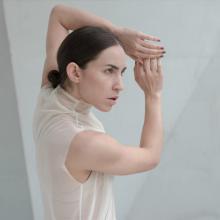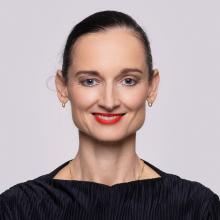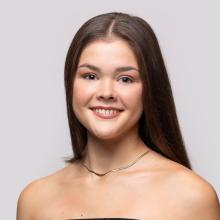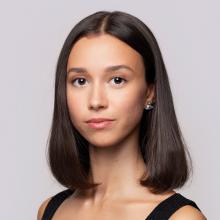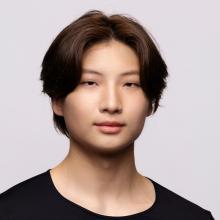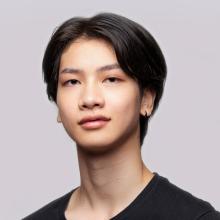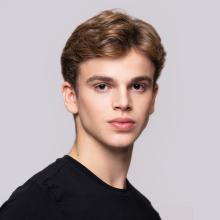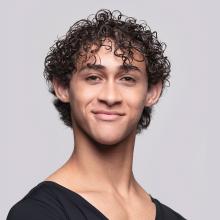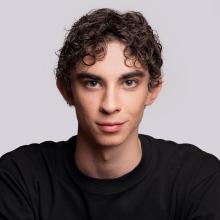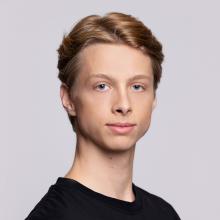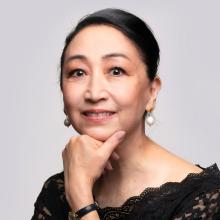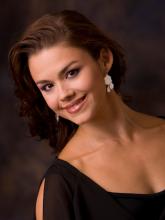Ten
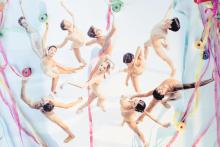
Ten years of the Junior Company!
Foreword by Ted Brandsen, Director of Dutch National Ballet
Ten years of the Junior Company!
Welcome to this extra festive performance by the Dutch National Ballet’s Junior Company! In Ten, we’re celebrating the tenth anniversary of our junior company: ten wonderful years full of beautiful memories, and ten crops of talented, unique young dancers.
The Junior Company is a place where young dancers can gain practical experience and develop further as artists. I regard it as a great privilege to experience up close the boundless energy and drive of these talented youngsters and to see how they grow with us – both as dancers and as people. Many of the former Junior Company dancers have now moved up to Dutch National Ballet, and over half our company is comprised of Junior Company alumni, including five soloists and four principal dancers. So the Junior Company is not only very valuable for dancers just out of the ballet academy, but it’s also vital to the image of Dutch National Ballet.
The success of the Junior Company is due in large part to its artistic director Ernst Meisner and ballet mistress Caroline Sayo Iura. Their expertise, love of dance and total devotion to the dancers are unparalleled, and I’d like to express my sincerest thanks to them. I’m also very grateful to all the funds, sponsors and private donors who’ve supported the Junior Company over the years. Without them, none of this would have been possible.
In this performance of Ten, you can see the success of the Junior Company with your own eyes. The Juniors are taking on the challenge of a classical masterpiece by George Balanchine, a demanding work by Krzysztof Pastor and three world premieres by Kirsten Wicklund, Joseph Toonga and Wubkje Kuindersma. For her latest work, Ephemeral, Wubkje, a Young Creative Associate with Dutch National Ballet, is collaborating with Amelia Clarkson, who was selected from an open call for young composers to write a new piece of music for this programme. Their partnership demonstrates the fact that the Junior Company takes talent development a step further than just ballet alone. Entering into new relationships with artists from all sorts of disciplines and building on the future together – that, too, is something the Junior Company stands for.
I wish the dancers a great time and every success, and I hope you have a wonderful evening. Enjoy these talented youngsters and keep an eye on them, because the stars of the future are among them!
Ted Brandsen
Director of Dutch National Ballet
Performance information
Voorstellingsinformatie
Performance information
Valse Fantaisie
Choreography
George Balanchine
©The George Balanchine Trust
Music
Mikhail Ivanovitsj Glinka – Valse-Fantaisie in B-mineur (1839)
Costume design
Oliver Haller
Lighting design
Wijnand van der Horst
Ballet master
Caroline Sayo Iura
World premiere
1 June 1969, New York City Ballet, New York State Theater
Premiere with Dutch National Ballet’s Junior Company
28 January 2020, Radjawali Semarang Cultural Centre, Semarang, Indonesia
Duration
circa 9 minutes
Tu me manques
Choreography
Kirsten Wicklund
Music
Giulio Caccini – Amarilli mia bella (1601)
Vocals
Jake Ingbar (Dutch National Opera Studio)
Cello solo
Jeroen den Herder
Costume design
Kirsten Wicklund
Lighting design
Wijnand van der Horst
Dramaturgical advice
Peggy Olislaegers
Ballet master
Caroline Sayo Iura
World premiere with Dutch National Ballet’s Junior Company
3 February 2024, De Meervaart, Amsterdam
Duration
circa 5 minutes
Echoes of Memories
Choreography
Joseph Toonga
Music
Mönöchröme by Orin “oriyo” Norbert & Joshua Benjamin – Michael’s Soliloquy (2023)
Costume design
Jessica Xavier
Lighting design
Wijnand van der Horst
Assistant to the choreographer
Amanda de Souza
Dramaturgical advice
Peggy Olislaegers
Ballet master
Michele Jimenez
World premiere with Dutch National Ballet’s Junior Company
3 February 2024, De Meervaart, Amsterdam
Duration
circa 12 minutes
INTERVAL
Ephemeral
Choreography
Wubkje Kuindersma
Music
Amelia Clarkson – Ephemeral (2024) *
Musical soloists
(Dutch Ballet Orchestra)
Arwen Salama-van der Burg (viola)
Jeroen den Herder (cello)
Joris Wiener (clarinet)
Jet Sprenkels (harp)
Musical advice
Matthew Rowe
Costume design
Wubkje Kuindersma
Costume advice
Oliver Haller
Lighting design
Wijnand van der Horst
Ballet master
Michele Jimenez
World premiere with Dutch National Ballet’s Junior Company
3 February 2024, De Meervaart, Amsterdam
Duration
circa 10 minutes
* Composition commissioned by Dutch Ballet Orchestra and Dutch National Ballet
Toccata
Choreography
Krzysztof Pastor
Music
Wojciech Kilar – Toccata from Pianoconcert no. 1 (1996) *
Costume design
Krzysztof Pastor
Lighting design
Pawel Piotr Jasiński
Wijnand van der Horst
Staging
Simonetta Lysy
Ballet master
Caroline Sayo Iura
World premiere
25 April 2019, Alexandrinsky theatre, Saint Petersburg
Premiere with Dutch National Ballet’s Junior Company
3 February 2024, De Meervaart, Amsterdam
Duration
circa 7 minutes
* Music Published / Licensed by: © Polskie Wydawnictwo Muzyczne / Albersen Verhuur B.V., 's-Gravenhage
Total duration
circa 1 uur en 30 minuten
Production manager
Anu Viheriäranta
Stage manager
Margus Spekkers
Company manager Junior Company
Sterre Haverkamp
Assistant Junior Company
Samira Ouazine
First carpenters
Zeth Pattinama
Nina Pronk
Lighting supervisor
Wijnand van der Horst
Lighting managers
Matthijs Gulien
Brian Tjon Ajong
Sound technicians
Bert van Oudenaren
Evert Smit
Production of costumes Ephemeral and Toccata
Costume department Dutch National Ballet
Production of costumes Tu me manques and Echoes of Memories
Atelier Martine Douma
Production of costumes Valse Fantaisie
Herma Stal
Assistant costume production
Michelle Cantwell
First dressers
Sanne Kamp
Merel Kamp
Nathalie Alink
Introduction videos choreographies
Ramy Tadrous
General introduction video
Reilin Joey Lopez
Transport
Fred Brinkhoff
Volunteer Junior Company
Henk Vrehen
‘Passing on your knowledge to new generations – nothing can beat that’
Interview with artistic director Ernst Meisner
‘Passing on your knowledge to new generations – nothing can beat that’
Interview with artistic director Ernst Meisner
The touring programme Ten celebrates not only the tenth anniversary and huge success of the Junior Company, but also that of its artistic director Ernst Meisner. With exceptional drive and passion, along with ballet mistress Caroline Sayo Iura, he prepares talented young dancers fresh from the ballet academy for a world-class career. “A dancing career is like a pressure cooker”, Meisner says. “So what a dancer wants more than anything else is to reach the top quickly, but sometimes they need a bit of help to get there.”
Over ten years ago, it wasn’t exactly the obvious time to start a new dance company. “Those were the days of State Secretary Halbe Zijlstra, who’d just made enormous cuts in the cultural sector”, says Ernst Meisner. “And not everyone was wild about the idea at Dutch National Opera & Ballet either. We had to really push for it. Ted (Brandsen – ed.) had to stick to his guns and say, ‘we’re simply going to do it now’, and I still count myself very fortunate that – in view of the political climate at the time – he had the courage to do so!”
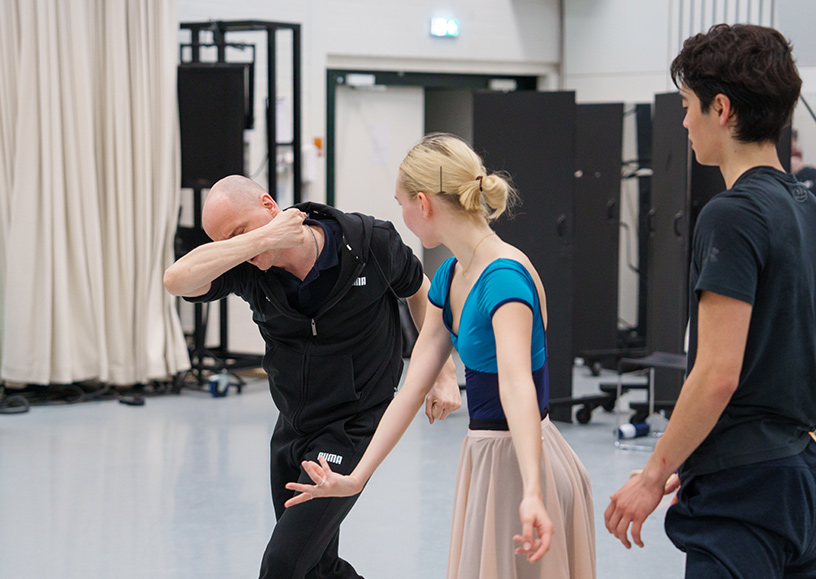
And quite apart from the finances, how do you actually do that – start a new company from scratch? Meisner laughs, “Initially, it was real pioneering. First of all, in 2012, I went to various international dance competitions, like the Prix de Lausanne and the Youth America Grand Prix, to scout dancers for a company that didn’t exist yet. I had Dutch National Ballet’s reputation to boast about, of course, but even so it was very nerve-racking, as nobody had ever heard of the Junior Company.”
‘Have you any idea what you’re getting into?’
For Meisner himself, however, the challenge of founding the Junior Company did come at the perfect moment. “When I was a dancer with The Royal Ballet, I’d already taken an arts management course, and in the period I was dancing with Dutch National Ballet I’d told Ted about my ambitions. But when Ted introduced me to Stijn Schoonderwoerd, who was Dutch National Ballet’s managing director at the time, I still got a thorough grilling. ‘You’re still so young. Have you any idea what you’re getting into?’ But after having danced for fourteen years, I was ready for it. I’d made it to grand sujet and danced some great roles, like Hilarion and Benvolio, but I also knew that was probably as good as it would get. On top of that, I’d always had a passion for teaching. Passing on your knowledge to new generations – in my view, nothing could beat that.”
Teamwork
The first years after the Junior Company was founded were one big adventure, he says. ‘Already in the first season, Caroline Sayo Iura – who’s a great asset to the company – rehearsed a ballet for us, but it was only in 2017 that she joined us in the position of ballet mistress. So in the beginning I was doing nearly everything myself: giving classes, taking rehearsals, being in the studio all day long and touring around the country on the bus with the dancers. In our first season, alongside all our appearances in Dutch National Ballet’s productions, we also gave around forty of our own performances. That was actually far too many, but we all thought it was amazing.”
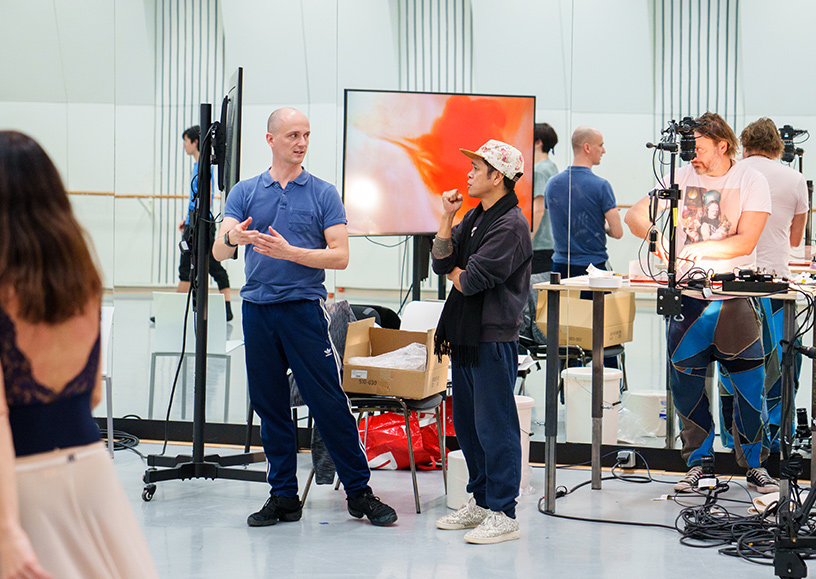
“We had a really great, extremely close-knit first group of dancers, as well as fantastic people behind the scenes, like dresser Sanne Kamp, who’s still working with us, and sound technician Bert van Oudenaren. We really built up the group together and seized every opportunity to make a name for ourselves: from performing at Central Station in Amsterdam to taking part in the Museum Night event.”
Over seven hundred applications a year
When Meisner set out on the adventure, he didn’t have very specific, well-defined expectations or goals, but he says that ten years ago nobody actually dared dream that the Junior Company would turn out to be so successful. “Now we’ve reached the point where it’s hard to imagine the Dutch dance scene, and the international one, without the Junior Company. This year, we had over seven hundred applications for our audition. Young dancers come to the Dutch National Ballet Academy (also led by Meisner since 2018 – ed.) to increase their chances of joining the Junior Company, and today more than half the dancers in Dutch National Ballet are former juniors. Of course, Dutch National Ballet has always focused on talent development, but now we’re seeing that by coaching and guiding young dancers very intensively, we’re all progressing even further. Moreover, the Junior Company has exceeded itself in other ways too, as besides producing new dance talent we’re also creating more and more opportunities for young choreographers and composers. And the intensive collaboration with ISH Dance Collective has been crucial both to where the Junior Company is today and (due to the mix of ballet and hiphop – ed.) to research into new, hybrid ways of moving.”
Scope to make mistakes
In recent years, other junior dance ensembles have been set up all over the world, but according to Meisner none of them are ‘linked so directly to a company’. “The juniors take part in productions by Dutch National Ballet, they train in the same building and gain extensive knowledge of the group’s repertoire.”
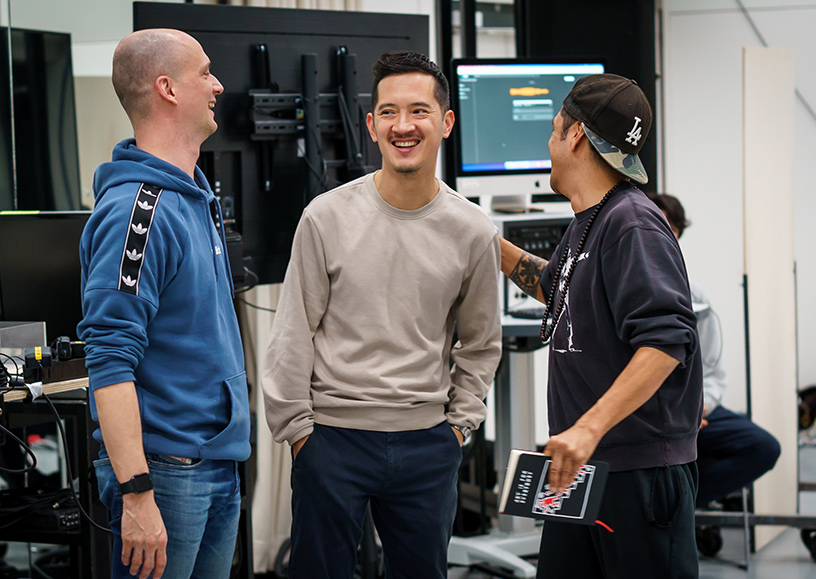
Nevertheless, the ‘in-between step’ they make between school and company as a member of the Junior Company has proved essential. “Although you can already do incredible things when you come from a ballet academy, you still have a lot to learn. From the daily rhythm of a professional company, the fast working pace and the extensiveness of the repertoire to, for example, how to deal with injuries, disappointments, choreographers and ballet masters. First spending one or two years in a junior company creates scope: scope to make mistakes, scope to settle down and scope to sometimes have a good cry and talk things over… and then to knuckle down to work again. A dancing career is like a pressure cooker. So what a dancer wants more than anything else is to reach the top quickly, but sometimes they need a bit of help to get there.”
Silence is golden
But it’s not only ‘his’ dancers who are learning, says Meisner. He’s learning himself, too – every day of his job as artistic director of the Junior Company. “Over the past years, I’ve seen a great many dancers, technicians, designers, composers and production people, etc. come and go. So not only does your knowledge of people grow, but you’re also continually gaining new, fresh insights. In addition, I’ve learned such a lot about what young dancers need, which means that I’ve also got a lot better at listening. Now I know that the quieter I keep, the better I can sense what’s going on. And hopefully I’m then better able to help the dancers grow further.”
The fact that he then has to let them go again after a year or two is just part of the deal, he says, adding enthusiastically, “That’s our goal: making sure they fly away, ready to start off with a major company.” He does, however, stay in regular contact with the juniors who are now making their career in places like Stuttgart, Berlin, Zurich and the United States, and of course with those who are now dancing their hearts out with Dutch National Ballet. “Unfortunately I’m too busy to watch all their performances, but it’s really nice to suddenly see them again after a few months and to realise how much they’ve progressed, that it’s all worked out and that they’re successful. It makes me truly happy!”
Text: Astrid van Leeuwen
Translation: Susan Pond
Ten years of Junior Company: Alumni
Tien jaar Junior Company: Alumni
Tien jaar Junior Company: Alumni
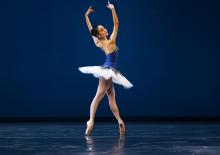
Class of 2013/2014
Dutch National Ballet - principal
Jessica Xuan
“The Junior Company provides an excellent opportunity to get experience in professional dance while also getting to know Dutch National Ballet. You get to dance a lot, both in groups and individually, and you form extremely close relationships.”
Photo: Kerstgala (2020)
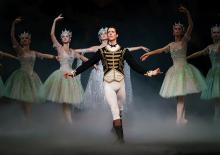
Class of 2014/2015
Staatsballett Berlin - soloist
Martin ten Kortenaar
“From a three-by-three-meter circle stage to the massive National Opera & Ballet stage. During my time with the Junior Company, we danced everywhere! Because we performed so many times in a variety of settings, I now feel entirely at ease on any stage.”
Photo: The Sleeping Beauty (at Dutch National Ballet, 2022)
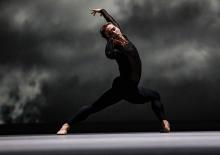
Class of 2015/2016
Dutch National Ballet - soloist
Joseph Massarelli
“My year with the Junior Company may have been one of the most important periods of my career so far. The opportunities I was provided then had a significant impact on my development within the big company.”
Photo: Legacy Variations (Dawson programme, 2022)
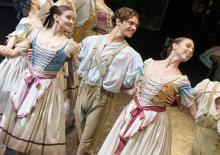
Class of 2016/2017
Dutch National Ballet - corps de ballet
Fabio Rinieri
“Dutch National Ballet’s Junior Company is unlike any other junior company, mainly because its concentration extends beyond the classical vision of dance.”
Photo: With Emma Mardegan and Nicola Jones in Giselle (2023)
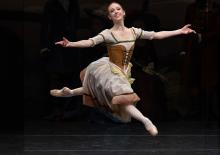
Class of 2017/2018
Dutch National Ballet - coryphée
Alexandria Marx
“The Junior Company was my home, a challenging yet safe environment in which I could grow and understand what it takes to be a professional dancer. I am still growing as a result of that solid foundation, and I can’t imagine where my career would be without it.”
Photo: Giselle (2023)
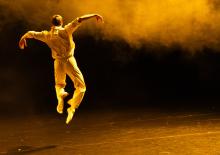
Class of 2018/2019
Dutch National Ballet - corps de ballet
Sander Baaij
“The Junior Company provided an excellent opportunity for me to develop as a dancer. I learned a lot from this experience and remember it warmly.”
Photo: Nobody Asked (New Moves programme, 2023)
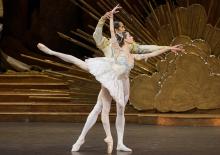
Class of 2019/2020
Dutch National ballet - soloist
Elisabeth Tonev
“My transition from ballet academy to professional company was made much easier by the Junior Company. We were able to become acquainted with Dutch National Ballet’s repertory while working on our own programmes. And I made lifelong friends there.”
Photo: With Davi Ramos in The Sleeping Beauty (2022)
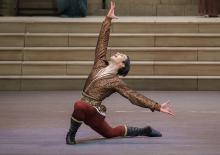
Class of 2020/2021
Dutch National Ballet - principal
Giorgi Potskhishvili
“Despite the difficulties caused by the coronavirus, my Junior Company experience was great. The Junior Company is a very wonderful place where I met colleagues who have become like family. It’s wonderful that we've developed such a close friendship as a result of our shared experience.”
Photo: Raymonda (2023)
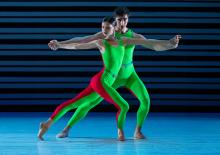
Class of 2021/2022
Dutch National Ballet - élève
Louisella Vogt
“For me, the Junior Company provided an excellent setting in which to grow as a young dancer and gain new experiences. Especially the annual tours left me with many valuable and enjoyable memories.”
Photo: With Guillermo Torrijos in In and Out (Shooting Stars programme, 2022)
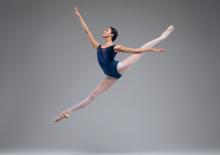
Class of 2022/2023
Dutch National Ballet - Junior Company second year
Carolina Ribaldone
“Being a part of the Junior Company last season was an excellent opportunity for me. The repertoire was fantastic, we were able to develop ourselves in many styles, and we finished the season with an unbelievable tour of Indonesia.”
Virtuoso and romantic ballet gem
About Valse Fantaisie
Virtuoso and romantic ballet gem
The Russian-American choreographer George Balanchine was very fond of the work of Mikhail Ivanovich Glinka, the first great Russian composer, who is sometimes called the Mozart of Russian music. Already as a pupil of the school of the Imperial Ballet in St Petersburg, Balanchine danced in one of Glinka’s operas – “I loved every note of that music” – and he was later to create several ballets to compositions by Glinka. He even used his Valse Fantaisie three times: for a variety show in London in 1931, for a ballet in 1953 and later, in 1967, for a new version, as the second section of the four-part Glinkaiana. It is the latter version that is still performed today, as a stand-alone ballet, by numerous leading ballet companies.
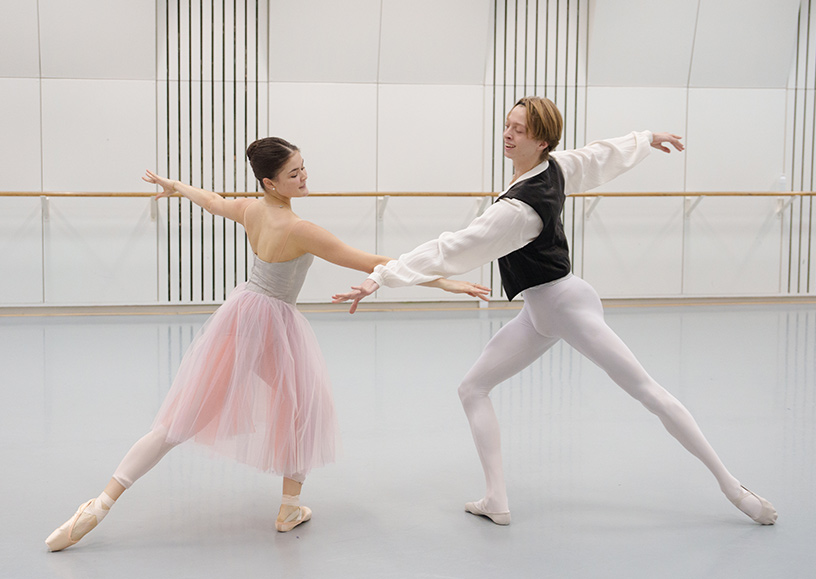
Glinka’s Valse Fantaisie is quick and sprightly, although the composition is also described as the ‘melancholy waltz’. What appealed most to Balanchine was the manifestly dancy nature of the music, which inspired him to create a gem of pure, romantic dance for a soloist couple and four female dancers. In the virtuoso choreography, Balanchine restricts himself to just a few movement motifs, on which he then makes variations to his heart’s content, with eye-catching light jumps and high extensions. The two soloists show off their skills with brilliance – and seemingly without effort – in short duets and individual variations. The four women whirl around them like a miniature corps de ballet, at the same time serving to underline the female soloist and thus also – typically of Balanchine – the ideal woman.
Text: Astrid van Leeuwen
Translation: Susan Pond
Love as an individual emotion
About Tu me manques
Love as an individual emotion
The Canadian choreographer Kirsten Wicklund is, she says, ‘always doing five things at once’, in her roles as choreographer and dancer with Opera Ballet Vlaanderen. Wicklund says, “It’s great to be a maker and create works yourself, whilst as a dancer also getting the chance to interpret the ideas of other choreographers. When I do so, those ideas become part of myself, so they also become part of my own choreographic works. For me, that’s a good way of passing on a piece of ballet history.”
In her duet Tu Me Manques, Wicklund delves further into this ballet history and makes her own contribution to it. Along with the dancers, she explores new ways of performing fundamental movements from classical ballet technique, taking feeling and instinct as important starting points. Wicklund explains, “I ask the dancers to look for a connection to their own feelings and emotions when doing classical movements that are familiar to them. This means they have to really be themselves, and the classical syllabus is approached in a very human way.”
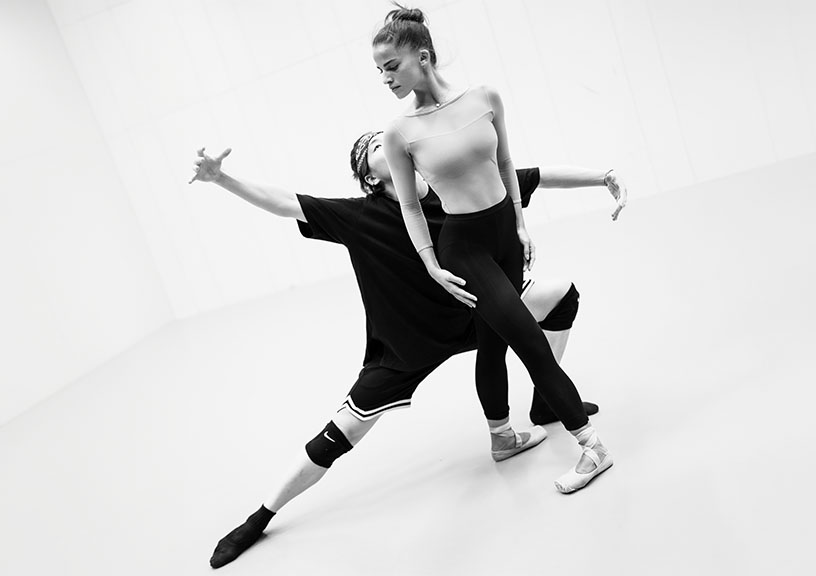
Although Tu me manques (French for ‘I miss you’ or – more literally – ‘you are missing from me’) is a duet for a man and a woman, and is set to the love song ‘Amarilli mia bella’, the work doesn’t tell a traditional love story. It focuses more on the idea of love as an individual emotion. “The two individuals express and observe the overwhelming sensation of love and the torment when that sensation is missing.” Yet Wicklund didn’t want to completely avoid the drama of the music. “So there are more intimate moments in the piece, where the dancers enter into the passion of the music together, as well as moments when their attitude is more aloof, with regard to the music and to one another.”
Text: Rosalie Overing
Translation: Susan Pond
Five years of Dutch National Opera Studio
This season, besides the tenth anniversary of the Junior Company, we’re also celebrating five years of the Dutch National Opera Studio, the talent development programme of Dutch National Opera. So for the first two performances of Ten, the music for Kirsten Wicklund’s Tu Me Manques will be performed live by countertenor and Opera Studio member Jake Ingbar and cellist Jeroen den Helder. Kirsten Wicklund says, “Just like the dancers, the musicians also perform a duet: a conversation between two musical voices that’s reflected in the choreography.”
Rediscovered memories in a new movement idiom
About Echoes of Memories
Rediscovered memories in a new movement idiom
What do memories look like in dance? This question is explored by the British-Cameroonian choreographer Joseph Toonga in Echoes of Memories; a work about raking up, connecting and reviewing the events stored in your brain and in your muscles. Besides his own memories, Toonga also uses the physical memories stored by the dancers themselves in their bodies. Toonga says, “Right at the start of the piece, the juniors are already left to their own devices and their own feelings. For the first three minutes, they move in silence and have to recall their personal rhythm – just by remembering the beat.”
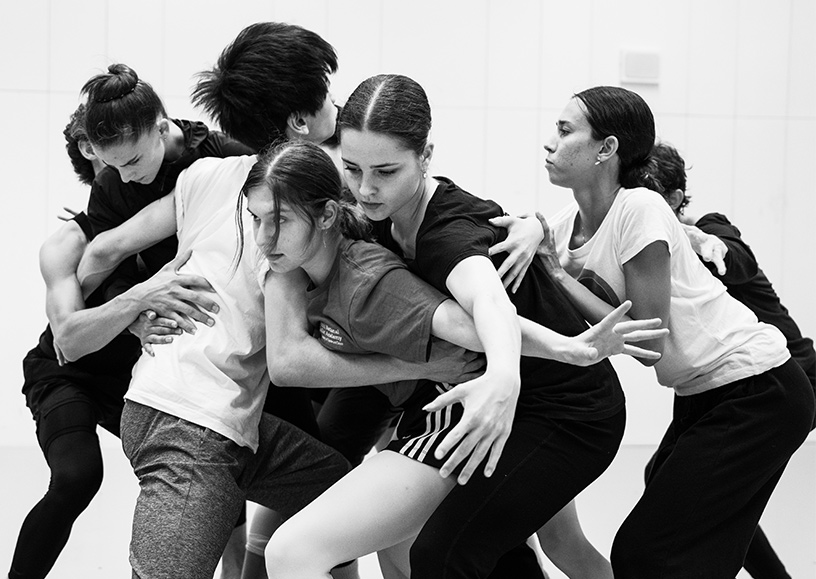
Besides the use of personal stories, Toonga’s piece is characterised by a very individual style. Working on the basis of his hiphop background, he draws on all the possibilities and movements from that genre, and then it’s up to the dancers to make them their own. “In solos, duets and group sections, their classically trained bodies now tell a story in a movement idiom that is totally new to them.”
As Ten is a celebration of the tenth anniversary of the Junior Company, Toonga gets the whole group dancing in the piece – “to really celebrate the company in its entirety!” The choreographer thus creates and pays tribute to individual experiences as well as a special collective memory, for dancers and audiences alike.
Text: Lune Visser
Translation: Susan Pond
‘Like patterns that inexorably carve their way through marble’
About Ephemeral
‘Like patterns that inexorably carve their way through marble’
Ephemeral – fleeting, elusive – is not only the title of Wubkje Kuindersma’s new creation for the Junior Company, but in fact it also typifies the working process. “Normally, I look for music that fits my ideas and I choreograph with that music in mind. But this time, the music was only available at the last minute. So initially, the creative process was rather elusive and I worked back to front, as it were, trying to choreograph a piece that fitted both the music and that feeling.”
Especially for the tenth anniversary of the Junior Company, an open call was issued to young composers for Kuindersma’s new work. The winner turned out to be Amelia Clarkson, from Northern Ireland. Her composition for harp, clarinet, cello and viola will be performed live on stage by musicians of the Dutch Ballet Orchestra for the first two performances of Ten (the music will be played on tape for the other performances). Kuindersma says, “It’s beautiful, rich music, in which I keep discovering new layers, and which I get to love more and more as I go on. Amelia definitely has her own unique sound.”
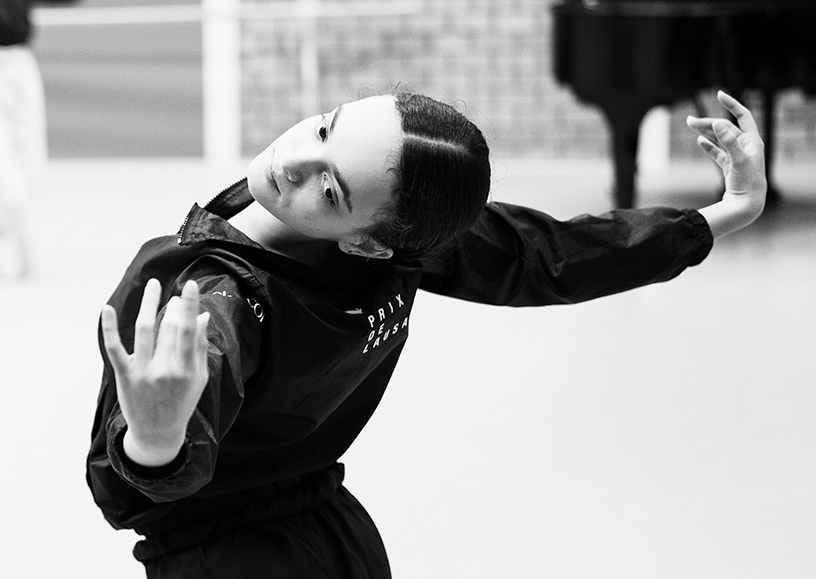
Whereas ‘inner drive’ formed their original starting point, Kuindersma ended up – through the working process and inspired by Clarkson’s composition – addressing the fleeting, elusive nature of dance or, more generally, the transience of life and the passing of time. “During rehearsals, I thought about the intangibility of haze and mist, for example, but also about the patterns in marble that carve their way inexorably – just like the passage of time – through the stone. At the same time, this new work is also simply a first encounter between Amelia and myself; an exploration, a sketch, in which we celebrate dance and music, sharing an ephemeral moment together.”
Text: Astrid van Leeuwen
Translation: Susan Pond
Ephemeral
dance exists in the moment
and it’s gone once the movement finishes
the memory and resonance linger though
both with performer and observer
it seems almost a contradiction:
something so physical
not being permanent
but just passing by
almost like life itself
we come and go
there is something tragically beautiful
in this ephemeral state of being
dance teaches us
to let go and not to hold on
to be in the moment
experience and simply be present
Wubkje Kuindersma
‘When composing, I always imagine movement’
About Ephemeral – the music
‘When composing, I always imagine movement’
Despite her youth, the 28-year-old Amelia Clarkson, from Northern Ireland, can already lay claim to many dance compositions. But never before had she worked with a choreographer who she hadn’t met in person before starting to compose. “When I received the commission for a new composition for the Junior Company, Wubkje and I started working together online and over the phone. We clicked straight away. Right from the start, Wubkje was open to searching for themes that touch us both and from which we both draw inspiration. We talked about our previous creations and about ideas that currently interest us, and gradually themes like conflict and resolution began to surface, which present themselves as fleeting moments in time.”
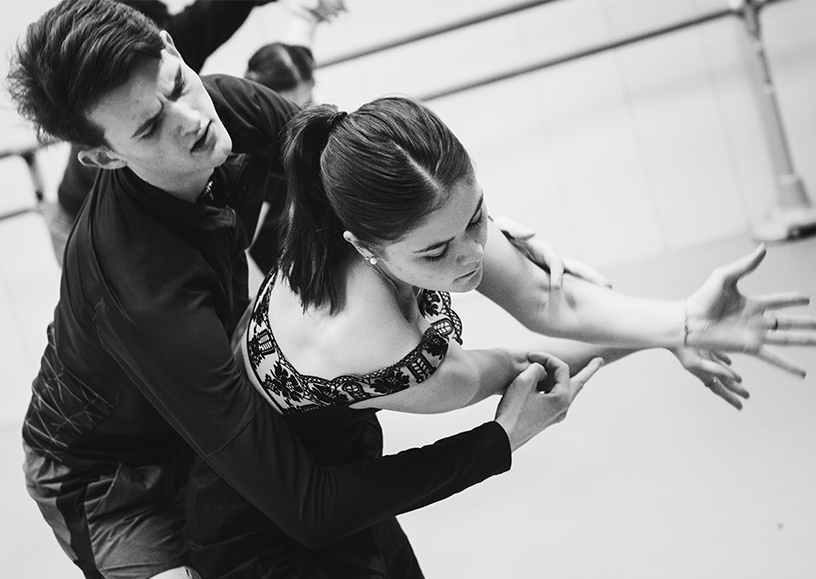
In her compositions, Clarkson combines traditional Irish folk music with both classical and contemporary music influences. “I try to find a delicate balance between them, and when writing for dance, I always imagine movement. Not that I expect the choreography to look like that, but I always try to think about people on stage and the energy they convey.” Yet when asked whether she deliberately creates ‘danceable’ music, she answers, ‘yes and no’. “I think this new work is probably less conventionally danceable. Some parts are static and others are spatial, but there are also parts where Wubkje and I have really tinkered with the music together to propel it forward and create a sense of drive.”
Text: Astrid van leeuwen
Translation: Susan Pond

Amelia Clarkson
Amelia Clarkson (born 1995) is a Northern Irish composer and Royal Northern College of Music PhD candidate. Among other things, she got the famous Mendelssohn Scholarship to help support her PhD. Clarkson also works as an Associate Composer at the Irish Contemporary Music Centre, and the Arts Council of Northern Ireland supports her creative practice. Clarkson’s songs incorporate classical and Irish folk music influences, as well as addressing serious political themes.
The versatile talent of classically trained dancers
About Toccata
The versatile talent of classically trained dancers
When Krzysztof Pastor – former dancer and resident choreographer with Dutch National Ballet and current director of Polish National Ballet – chose a work by the Polish composer Wojciech Kilar for his full-length ballet Dracula in 2018, he was so inspired that he decided to use Kilar’s music for other ballets as well. He choreographed the first of these works to the last movement of Kilar’s Piano Concerto No. 1: the toccata; a virtuoso keyboard composition with no fixed form.
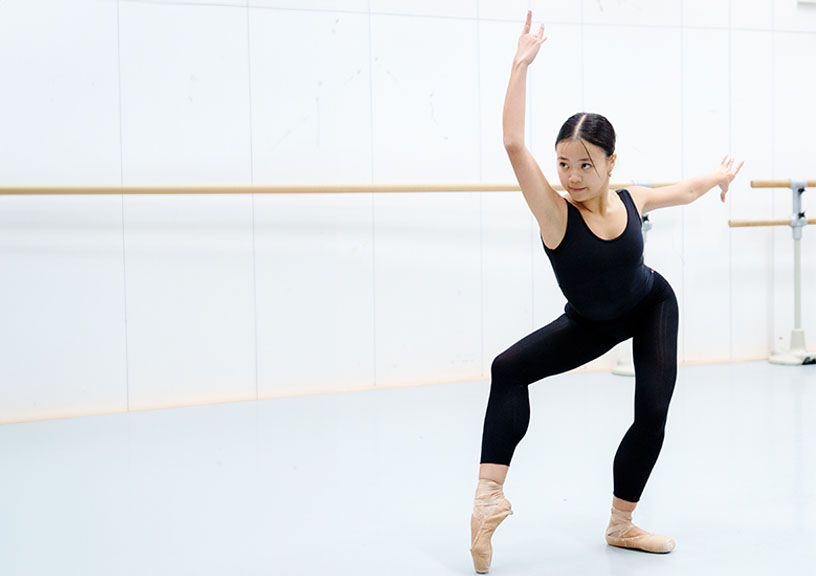
In his ballet of the same name, Pastor takes classical ballet technique as his starting point, then challenges the five dancers to move in a more contemporary way, in order to demonstrate the wide scope of the talent of classically trained dancers. The result is an athletic ballet that lasts just six-and-a-half minutes, alternating between solos, duets and group sections. Pastor originally created Toccata for the dancers of Polish National Ballet – his other great source of inspiration alongside Kilar’s music – as a way of showing off their talents and qualities. Now it’s up to the dancers of the Junior Company to do the same.
Text: Rosalie Overing
Translation: Susan Pond
Become a Friend of Dutch National Ballet
As a Friend, you support the dancers and makers of Dutch National Ballet. You are indispensable to them and we are happy to do something in return. For Ballet Friends we organize exclusive activities behind the scenes. You will receive the Friends magazine from us and you will receive priority when ordering tickets.

